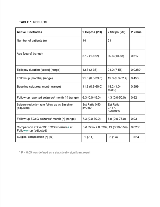Seizure Outcomes in Responsive Neurostimulator (RNS) Therapy Comparing Strip Electrodes to Depth Electrodes
Abstract number :
3.146
Submission category :
3. Neurophysiology / 3E. Brain Stimulation
Year :
2018
Submission ID :
504178
Source :
www.aesnet.org
Presentation date :
12/3/2018 1:55:12 PM
Published date :
Nov 5, 2018, 18:00 PM
Authors :
Danielle McDermott, University of Colorado; Mesha-Gay Brown, University of Colorado; Stefan Sillau, University of Colorado; Saul Schwarz, Colorado Permanente Medical Group; Aviva Abosch, University of Colorado; Steven Ojemann, University of Colorado; and
Rationale: One third of patients with epilepsy develop drug-resistant seizures. Surgical options include resection and neurostimulation. Responsive neurostimulator (RNS) therapy is a method of direct, closed loop neurostimulation used to treat one or two seizure foci. Subdural strip or depth electrodes are placed in variable combinations. There are no seizure outcomes data comparing RNS depth to strip electrodes. Our objective was to compare seizure frequency in patients treated with RNS depth electrodes compared to those treated with strip electrodes. Methods: The institutional epilepsy surgery database at the University of Colorado was queried for patients implanted with RNS between August 2015 and May 2018. Patients were included if treated with either two depth (2D) or two (2S) electrode leads connected to the device. Patients were excluded if patients were implanted with strip and depth leads in combination or duration of treatment was less than 6 months. Abstracted data included age at implantation, duration of epilepsy, baseline seizure frequency at implantation, and clinically-reported and electrocorticographic seizures at most recent follow-up visit. Statistical analyses were performed with SAS 9.4 and STATA 13. Seizure rates were modeled with GLM Poisson/negative binomial rate regression with robust variance estimation. GEE was used for repeated measures data. ATE doubly robust propensity score weighted models were considered. Adjusted covariates included age, epilepsy duration, and logarithm of baseline clinical seizure rate. Results: Our query revealed thirty-five patients meeting inclusion criteria: 21 with 2S and 14 with 2D. Age and mean follow-up was similar in both groups. Mean duration of epilepsy was significantly longer in the 2S compared to the 2D group (21.0 vs 13.7, p = 0.04). Mean baseline seizure frequency was higher in 2S patients compared to 2D patients (18.2/mo vs 11.3/mo, p = 0.299). Mean clinical seizure frequency per month and mean ECOG seizure frequency per month at follow up was similar in both groups. There was a significant reduction in mean follow up seizure rate in the 2S group with and without adjustment for age and baseline seizure rate (76% unadjusted, p=0.001 and 88% reduction rate adjusted, p =0.0005). Seizure reduction was not significant in the 2D group (45% unadjusted, p=0.07 and 48% adjusted p=0.09). Negative binomial modeling adjusting for mean follow-up seizure rate demonstrated significantly fewer clinical (p=0.03) and ECOG (p=0.02) seizures in the 2S group. Subgroup analysis of mesial temporal onset seizures showed no significant difference in seizure frequency between groups. Complications were reported in 1 of 13 2D (7.1%) and 3 of 21 2S patients (14.3%), p=0.64. Conclusions: Our results suggest treatment with RNS strip electrodes may provide improved seizure reduction compared to depth electrodes with similar complication rate. This effect appears associated with lateral temporal and extratemporal neocortical seizure onset. Additional explanations may include: greater surface area of exclusive grey matter stimulation with strip leads as opposed to grey and white matter stimulation with depth electrodes; orientation of current delivery; or the presence of a lesion. Larger patient populations are needed to confirm these findings and power additional subgroup analyses. Funding: None
